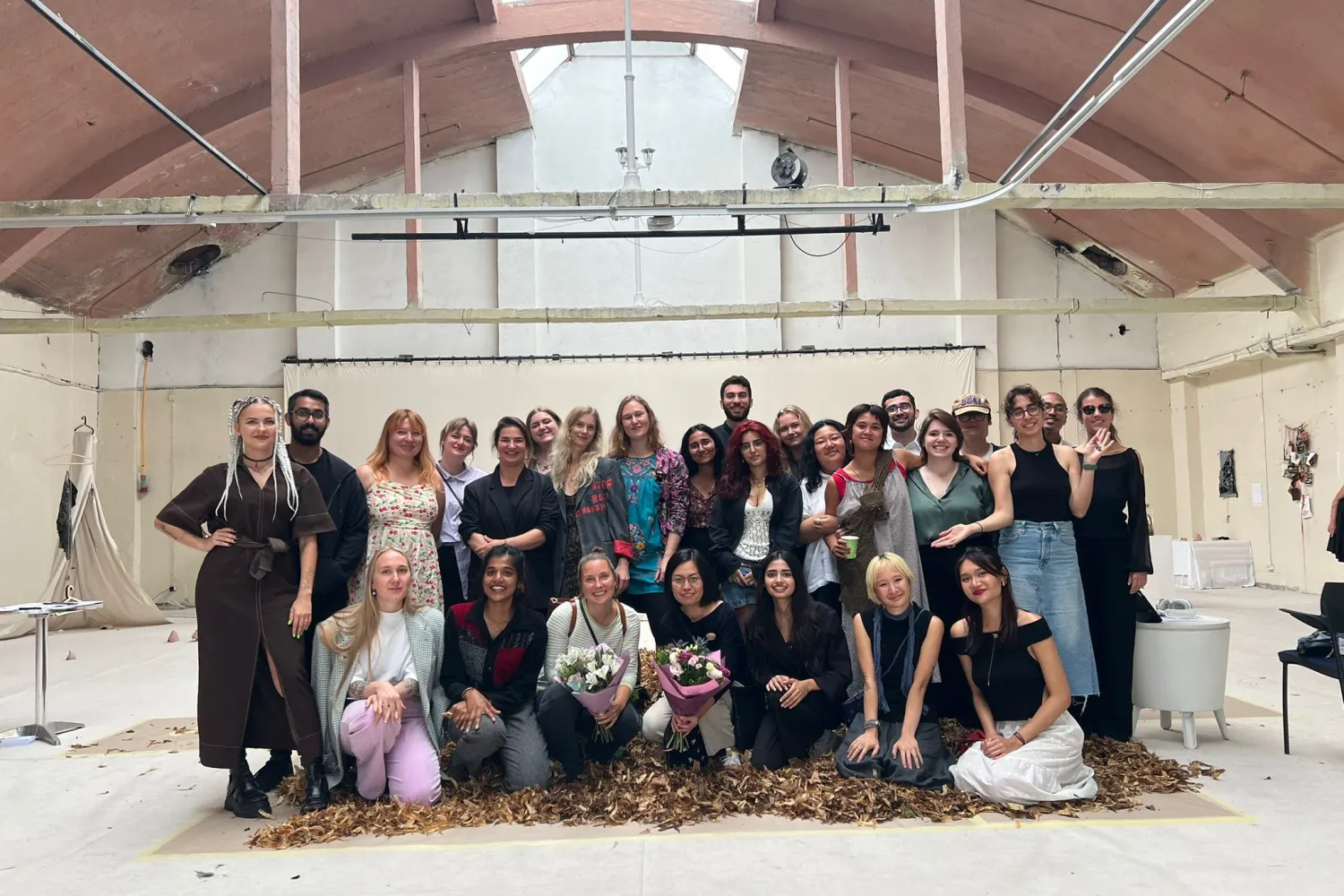Open Studio 2026 Printmaking Residency
The RBC Centre for Emerging Artists & Designers is excited to announce the Open Studio Printmaking Residency Career Launcher for OCAD U students.

It is the second time that OCAD U and the Estonian Academy of Arts (EKA) have joined forces to organize a residency program. Following the success of the first residency in 2022, the 2024 artists-in-residence program expanded from a one-week residency of nine participants (three of which were OCAD U graduates) in 2022 to a two-week residency of 25 participants in 2024. Supported by Universities Canada’s Global Skills Opportunity program, this year’s residency brought together OCAD U students—ranging from graduate students in Digital Futures, Inclusive Design, and Criticism and Curatorial Practice to undergraduates in Graphic Design, Material Art & Design, Sculpture & Installation, and Environmental Design. Led by Dr. Nithikul Nimkulrat from OCAD U and Dr. Kristi Kuusk and PhD student Azeem Hamid from EKA, the residency focused on creatively integrating analog and digital materials under the theme, Analogue + Digital Materials = Sensorial.

The program’s dual learning objectives were to explore how human senses contribute to creating “sensorial” artifacts and to foster collaborative, interdisciplinary teamwork. Students were encouraged to experiment with digital and physical materials, blending diverse production techniques and artistic practices to create unique sensory experiences. The participants were divided into seven teams, each consisting of members from both OCAD U and EKA, based on their creative backgrounds and prior work. Collaboration unfolded not only within EKA’s state-of-the-art studios and labs—including facilities for ceramics, digital prototyping, digital weaving, e-textiles, leather accessories, and virtual reality—but also in the vibrant surroundings of Tallinn, from the natural landscapes to the city’s rich cultural sites.
To facilitate hands-on learning, students could choose from two workshops, allowing them to dive into unfamiliar materials and techniques. Daily check-ins, where teams shared their progress for group feedback, became essential for refining ideas and solving challenges. These feedback sessions often ended with the phrase, “Let’s meet at the beach,” as participants continued brainstorming and socializing in Tallinn’s scenic settings. Participants could also access one-on-one consultations with Nithikul and Kristi, called “check-outs,” to resolve specific technical or conceptual hurdles.

Although sustainability was not an explicit theme of the residency, many participants took conscious steps to minimize their environmental impact. They sourced local, natural materials to leave the smallest possible footprint, creating a practice that was both mindful and resourceful. This organic approach to sustainability reflects a growing awareness among artists and designers to engage responsibly with their environments.
The residency culminated in a public exhibition at Põhjala tehas, an emerging cultural center housed in a historic factory complex. Originally part of an industrial heartland, Põhjala tehas provided a rich historical backdrop for the students' work. Visiting the venue beforehand allowed each team to envision how their projects could integrate into the unique space, ensuring a cohesive display. Students planned logistics, such as acquiring necessary equipment from EKA, to enhance their installations.

On the final day, participants spent seven hours preparing their installations for the public reception at 4 p.m. The short but impactful three-hour exhibition attracted a lively crowd of local residents and visitors, far exceeding expectations. Visitors engaged enthusiastically with the artists, discussing the sensory, interactive pieces that reflected each team’s interpretation of the theme. The exhibition showcased the impressive results of interdisciplinary collaboration across cultural and academic boundaries, offering sensory experiences that combined the tactile appeal of analog materials with the immersive potential of digital media.

The 2024 OCAD U x EKA residency program equipped participants with both technical skills and critical collaboration abilities. Working across disciplines, cultures, and material practices, students gained an appreciation for diverse perspectives and creative processes. This interdisciplinary, international cooperation not only enriched their individual practices but also strengthened their teamwork capabilities, underscoring the program's potential to inspire emerging artists and designers.
The residency had two main objectives: first, to explore how sensory engagement with physical and digital materials can lead to innovative artefacts and experiences; second, to foster connections among participants by learning from each other’s varied backgrounds and practices. Participants had the freedom to conceptualize and experiment with projects across EKA’s studios and labs, as well as in Tallinn’s vibrant cityscape and natural surroundings, where encounters with nature and local culture sparked creativity.
By blending technological exploration with cultural exchange and sustainability, this residency deepened the partnership between OCAD U and EKA, creating a space for students to innovate and collaborate in a global context. As the program grows, it continues to offer unique opportunities for creative, hands-on learning that bridges boundaries in the art and design world.